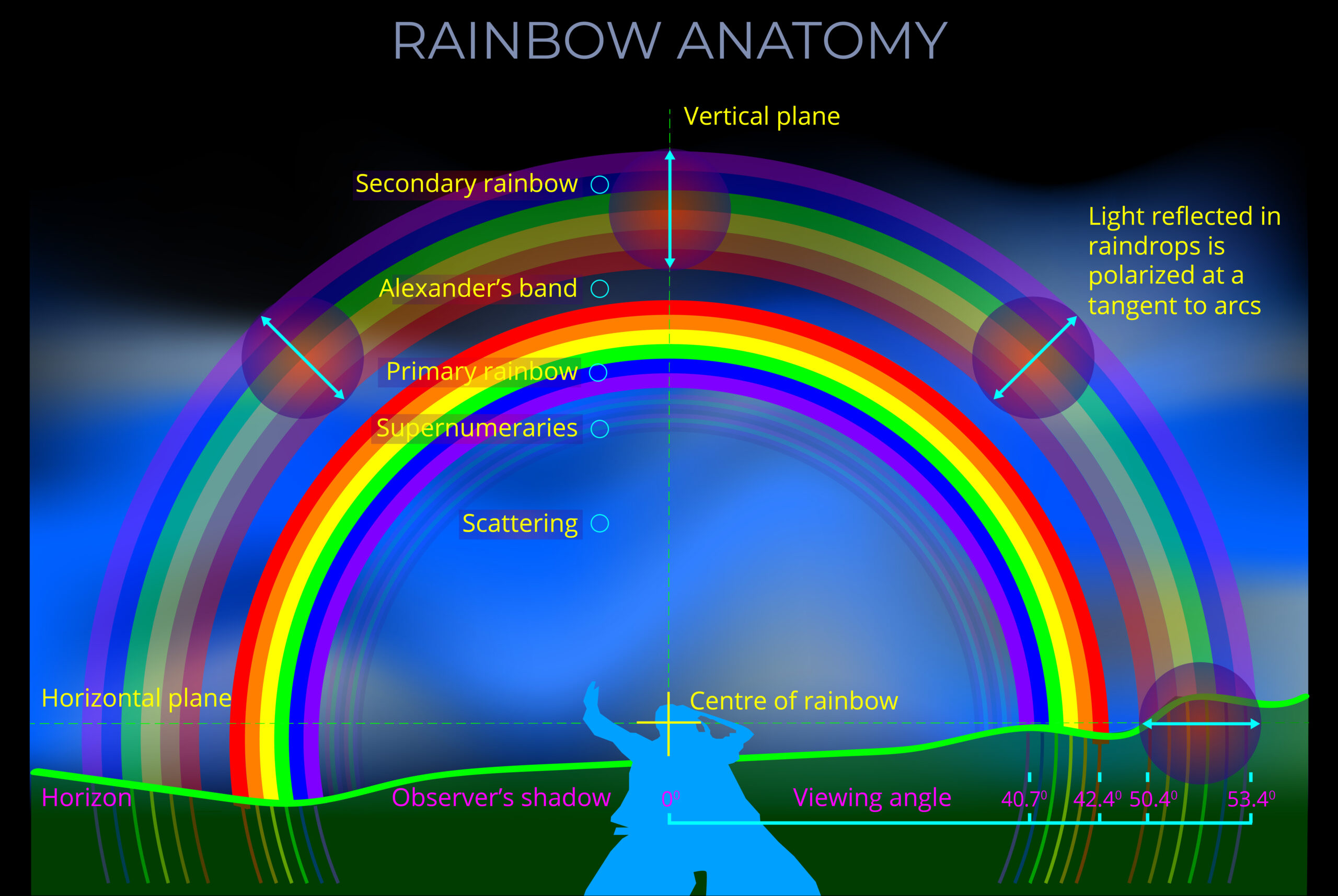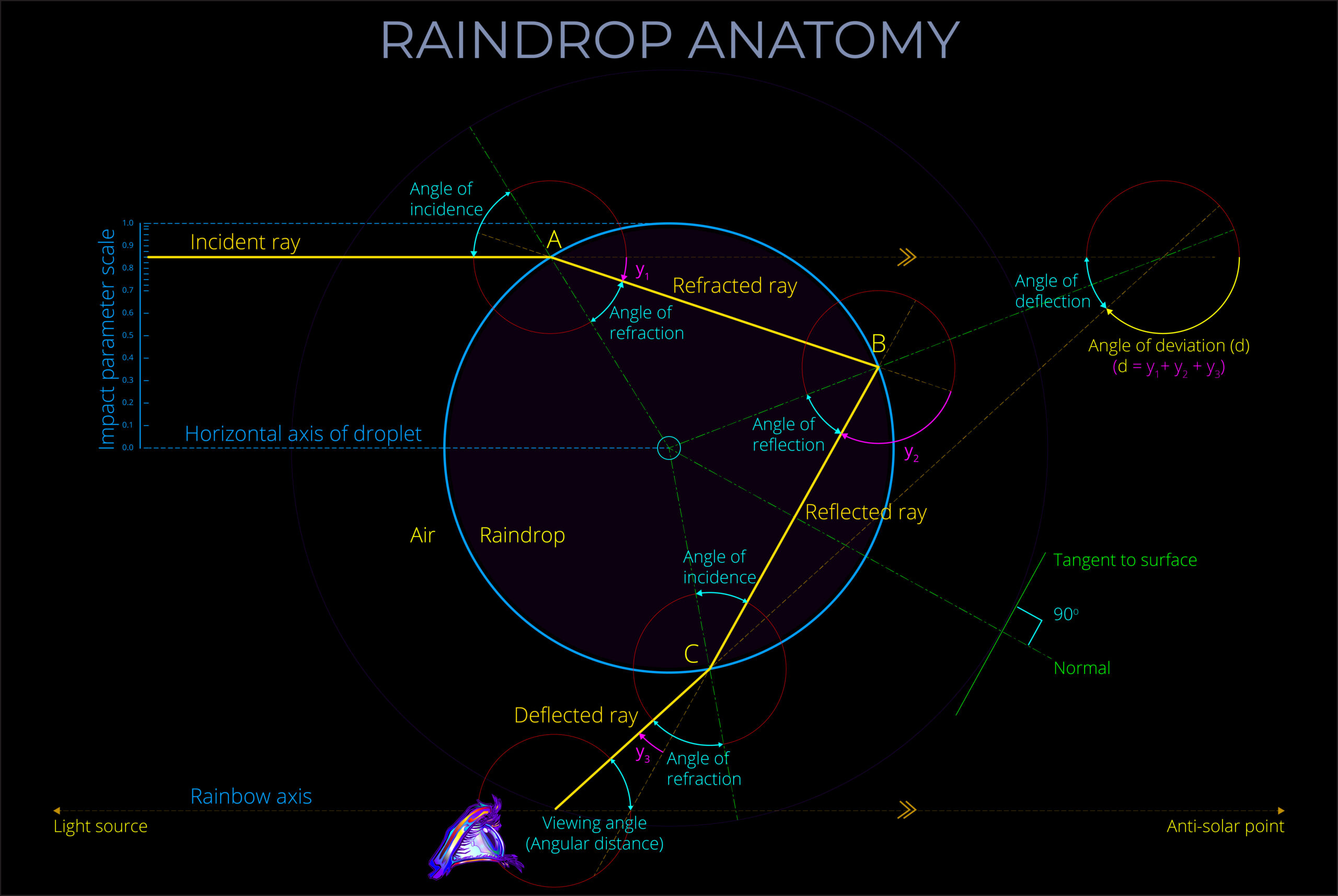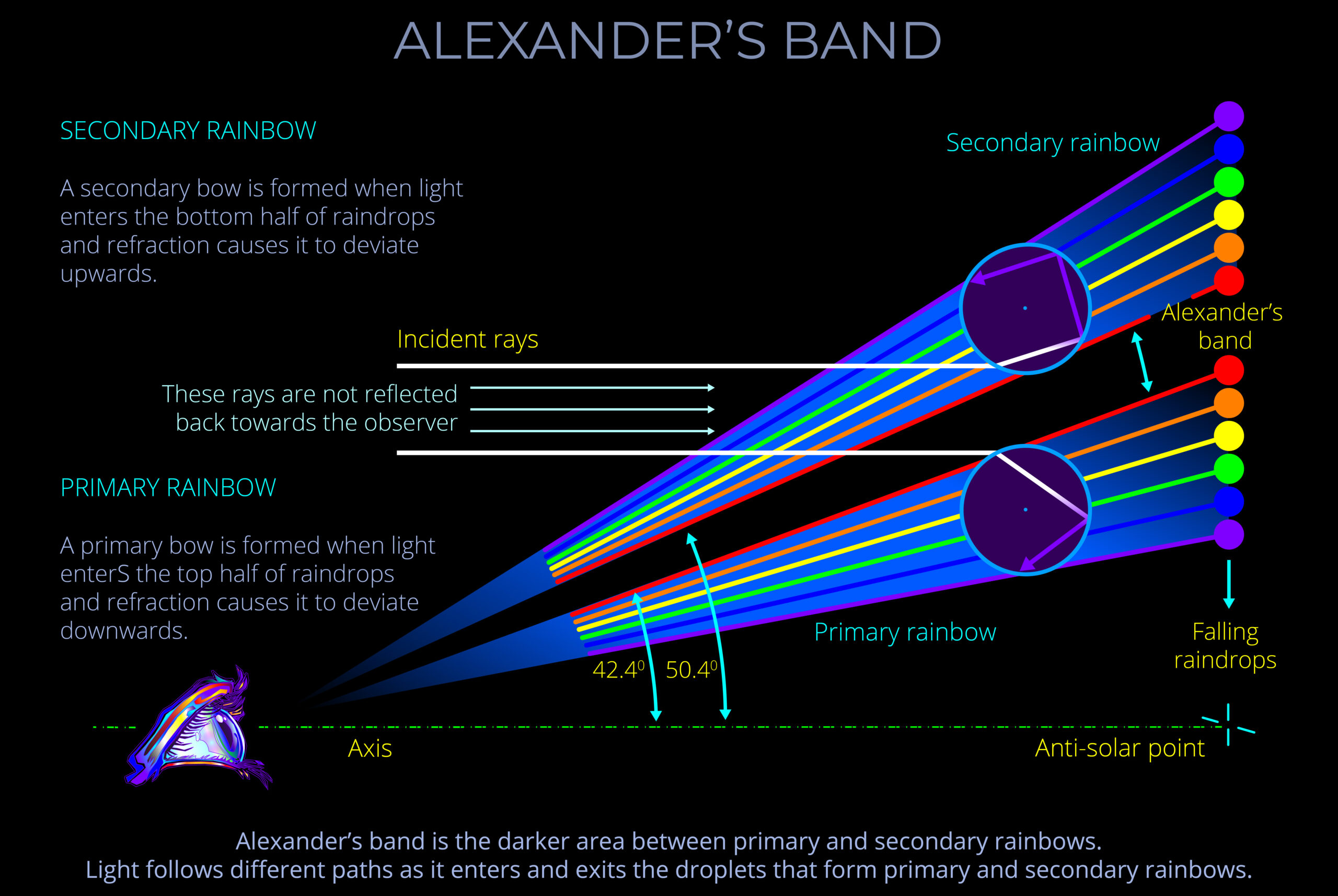A secondary rainbow is formed when sunlight undergoes two internal reflections within water droplets, creating an arc with colours reversed from the primary rainbow (violet on the outside, red on the inside). It appears larger and fainter due to light loss during the second reflection and a broader spread of wavelengths.
- A rainbow is an optical effect produced by illuminated droplets of water. Rainbows are caused by reflection, refraction and dispersion of light in individual droplets and results in the appearance of an arc of spectral colours.
- A secondary rainbow appears when sunlight is refracted as it enters raindrops, reflects twice off the inside surface, is refracted again as it escapes back into the air, and then travels towards an observer.
- A secondary rainbow always appears alongside a primary rainbow and forms a larger arc with the colours reversed.
- A secondary rainbow has violet on the outside and red on the inside of the bow.
- When both primary and secondary bows are visible they are often referred to as a double rainbow.
- A secondary rainbow forms at an angle of between approx. 50.40 to 53.40 to its centre as seen from the point of view of the observer.
- A secondary bow is never as bright as a primary bow because:
- Light is lost during the second reflection as a proportion escapes through the surface back into the air.
- A secondary bow is broader than a primary bow because the second reflection allows dispersing wavelengths to spread more widely.
Secondary rainbow properties
- The centre of a rainbow is always on an imaginary straight line (the axis of the rainbow) that starts at the centre of the Sun behind you, passes through the back of your head, out through your eyes and extends in a straight line into the distance.
- The centre-point of a rainbow is sometimes called the anti-solar point. ‘Anti’, because it is opposite the Sun with respect to the observer.
- The axis of a rainbow is an imaginary line passing through the light source, the eyes of an observer and the centre-point of the bow.
- The space between a primary and secondary rainbow is called Alexander’s band.
Related diagrams
Each diagram below can be viewed on its own page with a full explanation.
References
- A secondary rainbow is formed when sunlight undergoes two internal reflections within water droplets, creating an arc with colours reversed from the primary rainbow (violet on the outside, red on the inside). It appears larger and fainter due to light loss during the second reflection and a broader spread of wavelengths.
- A secondary rainbow appears when sunlight is refracted as it enters raindrops, reflects twice off the inside surface, is refracted again as it escapes back into the air, and then travels towards an observer.
- A secondary rainbow always appears alongside a primary rainbow and forms a larger arc with the colours reversed.
- A secondary rainbow has violet on the outside and red on the inside of the bow.
- When both primary and secondary bows are visible they are often referred to as a double rainbow.
- A secondary rainbow forms at an angle of between approx. 50.40 to 53.40 to its centre as seen from the point of view of the observer.


